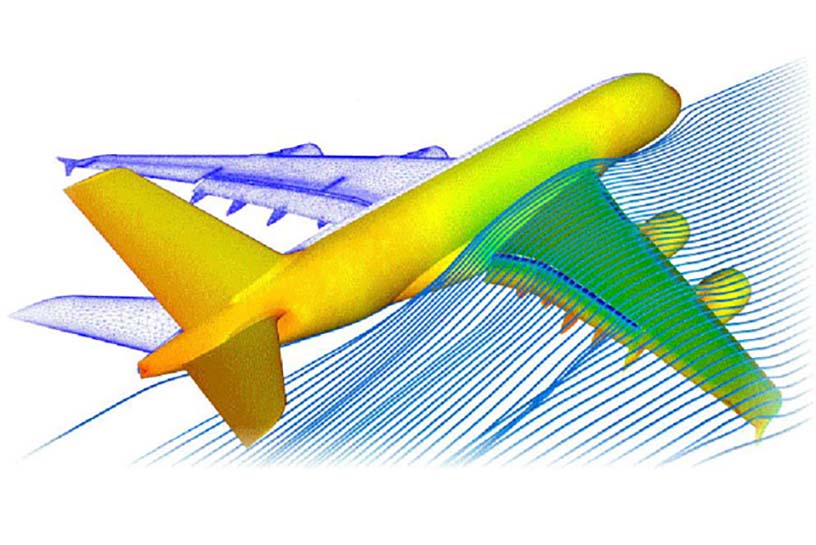The Science Behind the Magic: How Planes Defy Gravity with Aerodynamics
Have you ever looked up at the sky and wondered how planes can stay up there? It seems like a magical feat, defying the laws of physics. However, the truth is that there's nothing magical about it - it's all about aerodynamics.
Aerodynamics is the study of the motion of air and the interaction between solid objects and the air around them. In the context of aviation, aerodynamics is all about how planes are able to stay in the air and move through it.
In order to understand aerodynamics, it's important to first understand the properties of air. Air is a fluid, meaning it has the ability to flow and change shape when subjected to external forces. It's also compressible, meaning its density can change depending on the pressure it's subjected to.
When a plane moves through the air, it encounters two main types of air flow: laminar flow and turbulent flow. Laminar flow is smooth and predictable, while turbulent flow is chaotic and irregular. The type of flow a plane experiences depends on its speed and the shape of its wings.
A plane's wings are designed to take advantage of the properties of air and create lift. Lift is the force that opposes the weight of the plane and keeps it in the air. The shape of the wing and the speed at which it moves through the air are crucial to creating lift.
The top of a plane's wing is curved, while the bottom is flat. When air flows over the curved top of the wing, it has to travel a longer distance than the air flowing underneath the flat bottom. This causes the air to speed up, creating an area of low pressure above the wing. At the same time, the air flowing underneath the wing moves more slowly, creating an area of high pressure.
This difference in pressure creates lift. The upward force of the low pressure area above the wing is stronger than the downward force of the high pressure area underneath, creating a net upward force that lifts the plane into the air.
However, in order to maintain lift, a plane needs to keep moving forward. As the plane moves forward, it encounters more air molecules and creates more lift. If the plane were to stop moving, it would lose lift and fall to the ground.
Another important aspect of aerodynamics is drag. Drag is the force that opposes the forward motion of a plane and is caused by the friction of air molecules against the surface of the plane. Drag can be minimized by designing planes with smooth, streamlined shapes and reducing the surface area that comes into contact with the air.
One way to reduce drag is to use flaps and slats on the wings. Flaps and slats can be extended from the surface of the wing to increase the surface area and create more lift, while also increasing drag. This is useful during takeoff and landing, when a plane needs to slow down and descend.
Aerodynamics also plays a role in maneuvering a plane. The control surfaces on a plane, such as the ailerons, elevators, and rudder, work by changing the airflow around the wings and tail. By moving these surfaces, a pilot can control the pitch, roll, and yaw of the plane.
Pitch refers to the up and down motion of a plane, roll refers to the side to side motion, and yaw refers to the rotation of the plane around its vertical axis. By adjusting the control surfaces, a pilot can change the angle of attack of the wings and create more or less lift, allowing the plane to climb, descend, turn, or maintain altitude.
In addition to its practical applications in aviation, aerodynamics is also a fascinating subject in its own right. Researchers and engineers continue to study aerodynamics to improve the efficiency and performance of planes, as well as to develop new and innovative designs.
One area of research in aerodynamics is in the development of new materials and coatings that can reduce drag and increase fuel efficiency. For example, researchers are exploring the use of superhydrophobic coatings that can repel water and reduce friction, as well as new materials that can change shape in response to changes in airflow.
Another area of research is in the use of alternative fuels and propulsion systems. Electric and hybrid-electric planes are being developed, which could significantly reduce the environmental impact of aviation. In addition, new propulsion systems such as scramjets and plasma thrusters are being explored, which could revolutionize the way we think about air travel.
Despite the advances in technology, however, there is still much to be learned about the complexities of aerodynamics. Even small changes in the shape of a wing or the angle of attack can have a significant impact on the performance of a plane, and predicting the behavior of air flows around complex shapes is still a challenge.
Labels: Interesting, science, Technology


0 Comments:
Post a Comment
Subscribe to Post Comments [Atom]
<< Home